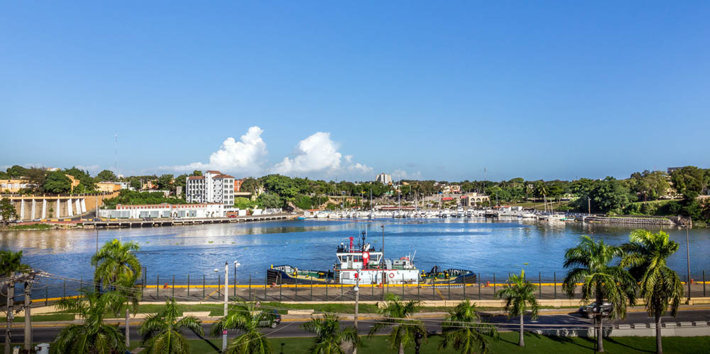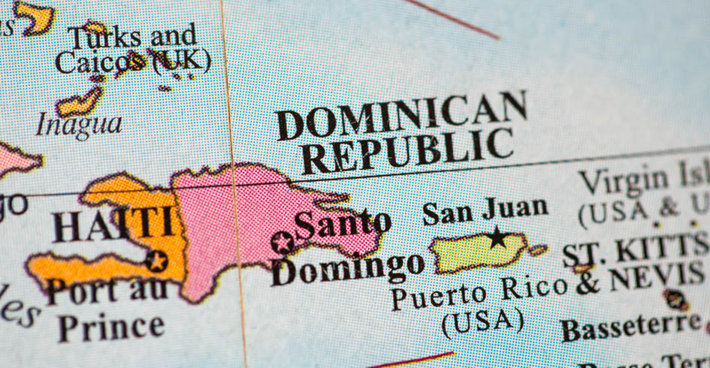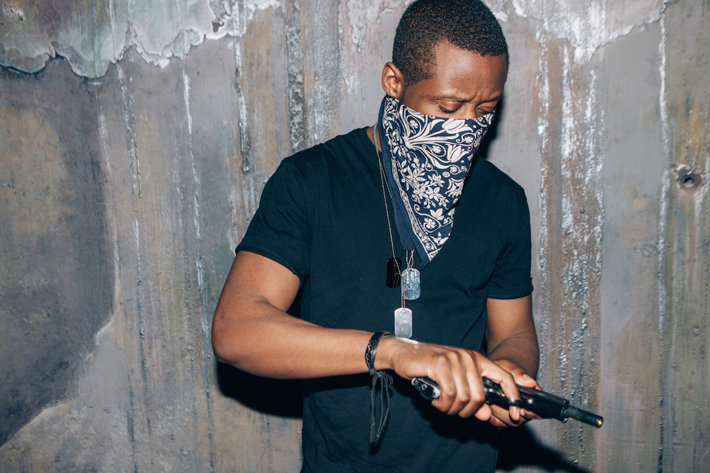Cocaine and Other Drugs in the Dominican Republic

It used to be that the Colombians had the entire cocaine trafficking route pretty well sewn up. From the jungles to the streets of U.S. cities, they could run the whole route. Vast amounts of coke swept in through South Miami, one of the primary channels used by the Colombians in the 1980s.
But interdiction efforts began to clamp down on Colombian operations. The Colombian drug cartels began to hand off much of the transport and sales of their drugs to other groups. As some of the Atlantic sea lanes that had previously been used by Colombia go-fast boats were under heavy surveillance, the Mexican drug traffickers picked up much of the burden of transport and conveyed the drugs across overland routes or along the Eastern Pacific.
But the Caribbean presented another viable alternative. Heavy tourist traffic meant lots of ships and planes and a wide variety of nationalities always coming and going. An abundance of banking institutions meant plenty of ways to launder money. As the Caribbean channel opened up, criminals in the Dominican Republic found they could establish a very beneficial relationship with their Colombian counterparts. As the relationship grew cozier, more cocaine began to make its way from Colombia to the Dominican Republic and on to the U.S.

In addition, the Dominican government found in 2004 that the majority of drugs entering the country were coming in by land—from Haiti. The cargoes would then move on to other areas by sea or air. Very often, Dominican gangs move their shipments to Puerto Rico rather than directly into the US as cargoes from Puerto Rico to the U.S. are not considered international shipments and are not scrutinized as thoroughly.
The Dominican Network was Already Established Before the Drugs Came Along
An advantage owned by the Dominican criminal organizations was that there were already hundreds of thousands of their kinsmen in the states, particularly in large Eastern cities such as New York and Washington, DC. Gradually, Dominican gangs began to establish control over drug distribution in cities such as these plus Allentown and Reading, Pennsylvania and New Haven, Connecticut. In New York City, the South Bronx and nearby Washington Heights became known for heavy Dominican Republic gang activity. In all, 54 East U.S. cities report Dominican gang activities and one of their usual activities was trafficking and selling cocaine, heroin and other drugs.
The Dominican Republic Makes a Convenient Way Station for Shipments
Cocaine destined for the U.S. or Europe could make its way across the Colombian border into Venezuela and from there, be shipped by sea or air to the Dominican Republic, the coast of Honduras, Mexico or other Caribbean or Central American sites. When other Caribbean ports got too hot, meaning there was too much successful interdiction, the Dominican Republic could be used as a layover point to throw off law enforcement looking for people coming directly from Venezuela, Aruba or Suriname.
Dominicans are frequently among those arrested for trying to smuggle drugs into Spain. In fact, Dominican drug traffickers have grown in importance on this European channel in recent years, and in numbers arrested are second only Spanish citizens.

Dominicans are also known to be allied with other Latin American crime organizations working the containerized cargo line for cocaine transport into Italy.
And of course, whenever there are drugs being shipped through a country, it’s always possible to shave a little off for the local population. While the Caribbean has long been a major conduit for cocaine coming into the U.S., between 2011 and 2013, the quantity of this drug passing through Dominican Republic hands soared 800%.
Drug-related murders have risen dramatically, now far exceeding the level of drug-related deaths in Mexico. Marijuana is the most frequently abused drug and Ecstasy is heavily trafficked in the country.
Social Problems at Home Lead Youth to Involvement in Drug Trafficking, Crime, and Gangs

Gang activity is widespread in Dominican urban areas. It’s very common for gangs to recruit children as young as 8 and 10 years of age. Gang leaders know that children under 13 will not be kept in jail if they are arrested, so young children are threatened and bullied into alliances with gangs and drug traffickers. Increasingly, these children are used to commit crimes in the drug trade, including murder.
In a Country with Severe Social Problems, Drug Rehabilitation is Hard to Find
As the economy suffers in the Dominican Republic, drug treatment programs take a back seat to simple basics such as food, shelter, and education for the citizens. In this situation, helping young people avoid the beginning of a drug habit is usually the most practical place to start. The drug education curriculum of Narconon has been proven to steer young people away from drug use and can be learned and taught in any language. For Spanish speaking individuals who are seeking rehabilitation, there are a number of Narconon centers available in Central and South America.
When young people stay away from drugs, drug addiction, and trafficking, an entire culture can begin to heal as these youth grow into adults.
 ®
®